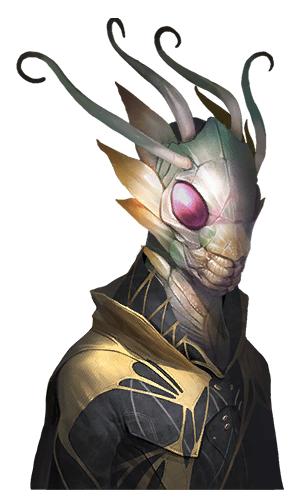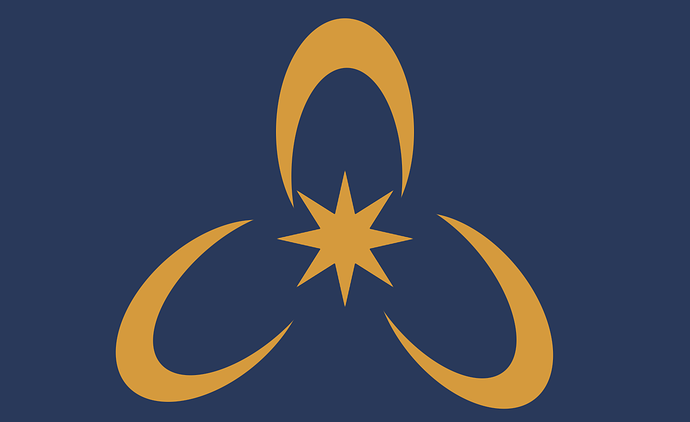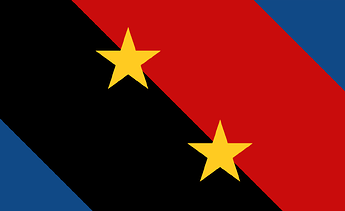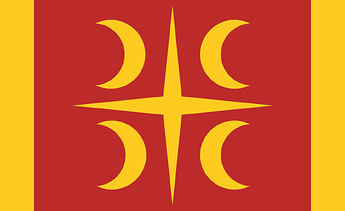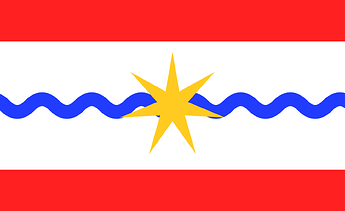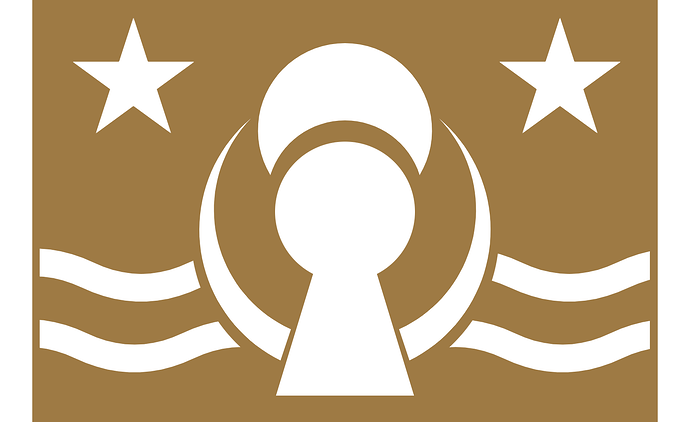Nation name: Federation of The Kravas
In respective languages
- Xravek Ixacat (Xatcatian Kravic)
- Ekatsat Kuravek (Cekarian Kravic)
- Foderosiye ti Krawa (Krowsrik)
- Dravadir Krua (Shenjari)
- possibly others
Species:
Major species
The Federation of the Kravas consist of 3 major species separated along 3 major National Entities, with minority species over that makes up more than 4% of The Kravas’ population being given their own Separate Autonomous Territory:
KRAVI
The Kravi are the majority inhabitants of The Kravas, making up around 51,2% of the total population. The Kravi of Krava I and Krava II, also sometimes referred to by the Kravi population as Xacatia and Cekaria respectively. The Kravi largely populates the Kravi Federation within the Federation of The Kravas.
The Kravi are humanoid, bipedal mammals, noted for their relatively flatter faces, small noses, longer limbs, with 4 fingers in each hand and foot, as well as lack of any body hair. The average height for a Kravi is around 194 cm for males and 188 cm for females. The Kravi are place great emphasis on their clans, which serve as the backbone of their community.
KROWSRIK
The Krowsrik are a diverse collection of humans found in large parts of Krava II (Korana in Krowsrik) and in smaller numbers of Krava I (Krowa in Krowsrik) and speak Standard Krowsrik or one of the many Krowsrik dialects. The Krowsrik are the second largest population, making up 25,8% of the population and concentrated largely in the Krowsrik Republic within the Federation of The Kravas.
SHEJARI
The Shenjari are a bipedal, humanoid species. Their most distinguishable features are their lack of facial features excluding a large mouth (which is used to communicate, eat and breathe), four arms (upper pair for fine manipulation and lower pair for strength-based tasks or multitasking), large stubby foot to support themselves, and their ability for neurospacial perception (reading low-frequency neuro-psionic pulses bouncing off surroundings and lifeforms, “feeling” the location, texture, density, and even emotional resonance of objects and beings within about 20 meters in clear environments.)
Despite their rather terrifying structure, the Shenjari are facultative omnivores whose primary diet consists of wood and plants in their homeworld of Krava I (roughly transliterated as Velos in Shenjari). Almost all of the Shenjari population is concentrated within the Queendom of Shenjar, the third National Entity within The Kravas, and making up around 10,4% of the population.
OTHERS
The remaining 12,6% are other smaller species and races who also inhabit The Kravas. Those whose population are above the 4% threshold are entitled to a Separate Autonomous Territory within the Federation, acting as a separate entity than the three National Entities.
Population: 23 billion
Number of Planets: 2
Historical description:
The Kravi, the largest species within the modern Federation, originally inhabited the world of Xacatia (Krava I), which they share with the Shinjari. Through a series of treaties, it was agreed that the larger Kravi would inhabit all of the northern parts of Krava I, whereas the Shenjaris would be limited to the smaller landmasses to the south. A thousand years before the rise of the Ho’seri faith, the Kravi unlocked spacefaring capabilities and began making moves to colonize a neighboring planet which they named Cekaria (Krava II). The Kravi made efforts to shift the demographics of the planet through colonization and conquest, wiping out many of the original inhabitants of Krava II. The expansions weren’t limited to Krava II alone, and the Kravi may have expanded further into nearby planets. With this, they Kravi elders declared the formation of the Guarded Lands of the Kravi, or simply the Kravi Empire.
The Kravi Empire eventually entered into contact with the Grand Kingdom of Kenai and maintained a close trade relationship. When the Ho’seri faith began to spread, the Kravi tacitly supported the Kenaian efforts to stem the faith. With the defeat of the Grand Kingdom of Kenai in the Unjust War, the Kravi Empire and the Hosarchy maintained cold relations at best. While a tense peace remained between the two states, the Kravi Empire began making moves to halt the spread of the Ho’seri faith, including pogroms within its territory. These led to a series of conflicts between the Hosarchy and the Kravi Empire which led to the eventual dissolution of the Kravi Empire in 2328 BBT, becoming one of the few times where the Ho’seri faith was spread through war.
Krava I and II remained separate, ruled by two different lords that were both backed by the Hosarchy. These two lords became bitter rivals, which played into the Hosarchy’s advantage as this lessens the possibility of both Kravas to reunite. Humans, who would become the ancestors of the Krowsrik, as well as other species from across the territories, began migrating into both Kravas. These efforts were in part pragmatic, to build up the economy and infrastructure of both Kravas following the devastating wars, as well as a political tool to strengthen the Hosarchy’s grip on Krava I and II.
When the War of the Great Border occurred, both Kravas found themselves in opposing sides as Krava I supported the Eastern Hosarch whereas Krava II supported the Western Hosarch. The two Kravas went into the War of the Great Border as bitter opponents, further fueled by the rivalry of their ruling lords. After a bloody coup within Krava II in 324 BBT wiped out the entirety of Krava II’s ruling elites, Krava I declared the foundation of the Lordship of The Kravas, which remained loyal to the Hosarchy in theory. However, as soon as the war ended, the lords of The Kravas began making moves to distance itself from the Hosarchy and began openly defying the Hosarchy by 220 BBT. When the Hosarchy fell, the Lord of The Kravas declared the restoration of the Guarded Lands of the Kravi, and reinstituting its old imperialist settler policies.
This added further discontent from within The Kravas’ other species, who would declare open rebellion against the Neo-Kravi Empire, dragging it into the Wars on The Kravas from 161 BBT to 138 BBT. During these periods, the various minorities formed the United Front (led by the separatist Krowsrik Republic and the Queendom of Shenjar, alongside smaller allies) against the Kravi. The war was marked by brutal cross-species violence, pogroms, and genocides, causing the death of nearly 20% of The Kravas’ population. Foreign actors from across the Territories also further exacerbated the conflict, as different actors placed their support on either the Neo-Kravi Empire or the various factions of the United Front. As war progressed, many began making efforts and, in 138 BBT, a general ceasefire was announced as the various factions worked together to form a peace agreement. This peace agreement saw The Kravas reorganized into a semi-confederal state consisting of 3 National Entities as well as multiple Special Autonomous Territories, including the government center in the city of Abuka. A complex system of governance was put in place, ending the military side of the conflict for now.
Unfortunately, today tensions still remain within the species and their subgroups. The complexity of the arrangement had left various segments of governance in the hands of the entities and SATs, with the exception of the Ministry of Foreign Affairs, Ministry of Trade, Ministry of Security, Ministry of Justice, and Ministry of Interspecies Affairs. This arrangement means that in many aspects, the entities and SATs operate as quasi-states within their respective borders. The bloated bureaucracy has also given rise to various drugs, namely Seffra and the dangerously addictive Mester (also known as Dreampollen), to be harvested and/or distributed from the Federation. Various organized crime groups and cartels have also set up shop in The Kravas, doing everything from piracy, racketeering, scams, smuggling, and so on, exploiting the weak or bloated bureaucracy to operate in The Kravas.
Favorite Order: Officially neutral, however due to tensions within the Federation, each National Entity has their own respective preferences:
- Kravi Federation - La’seri Order
- Krowsrik Republic - Koph’mek Order
- Queendom of Shenjar - Davian Order
Emblem/flag:

